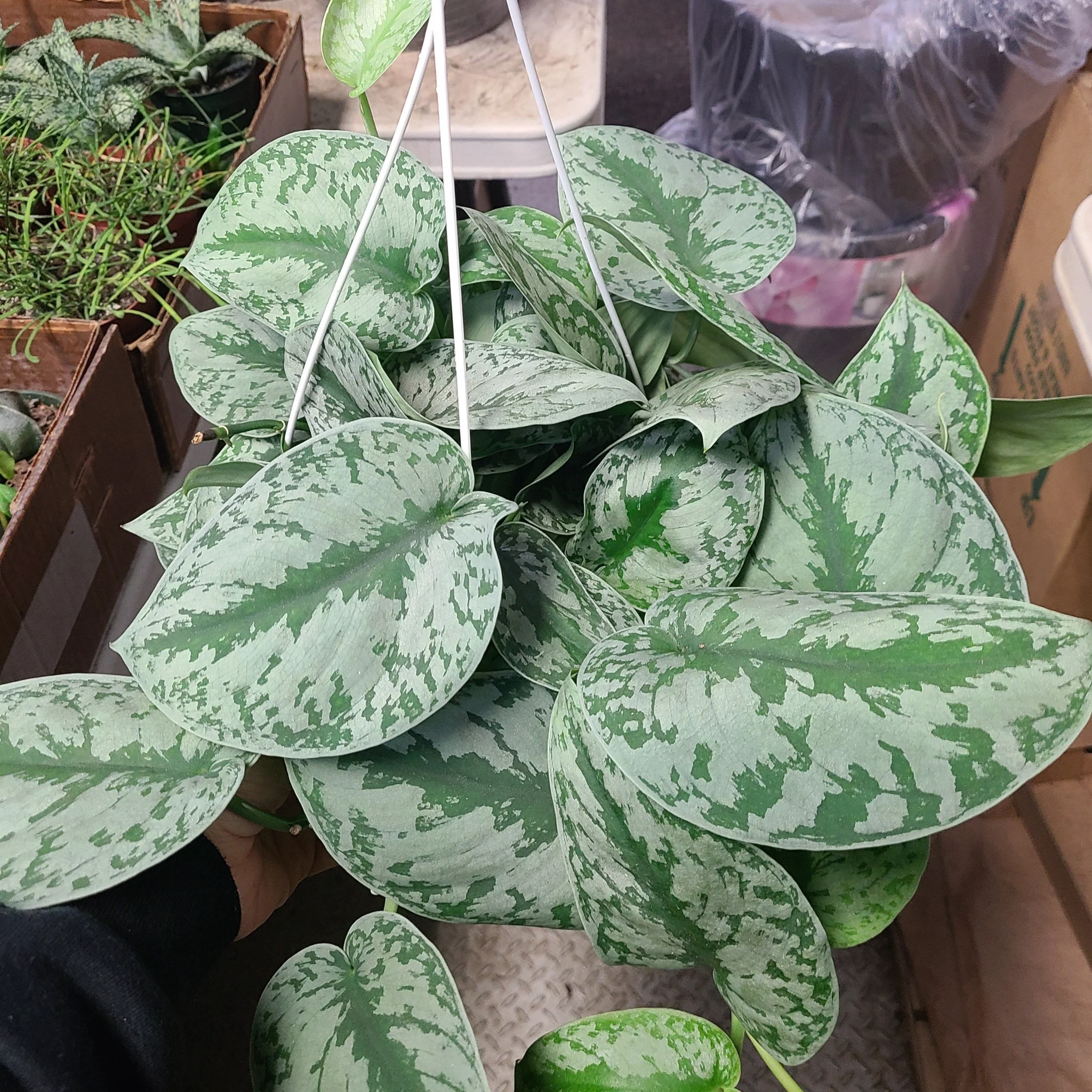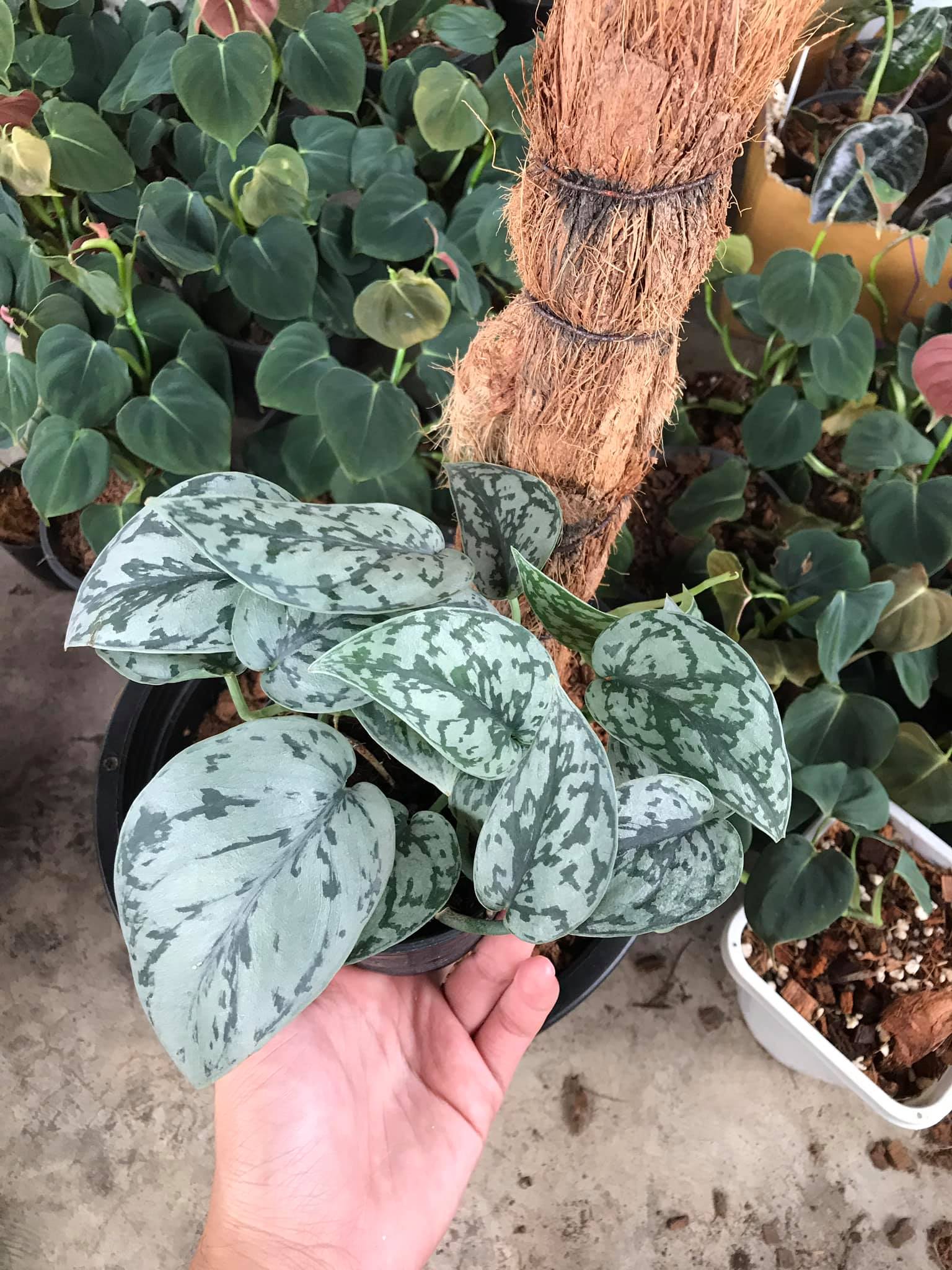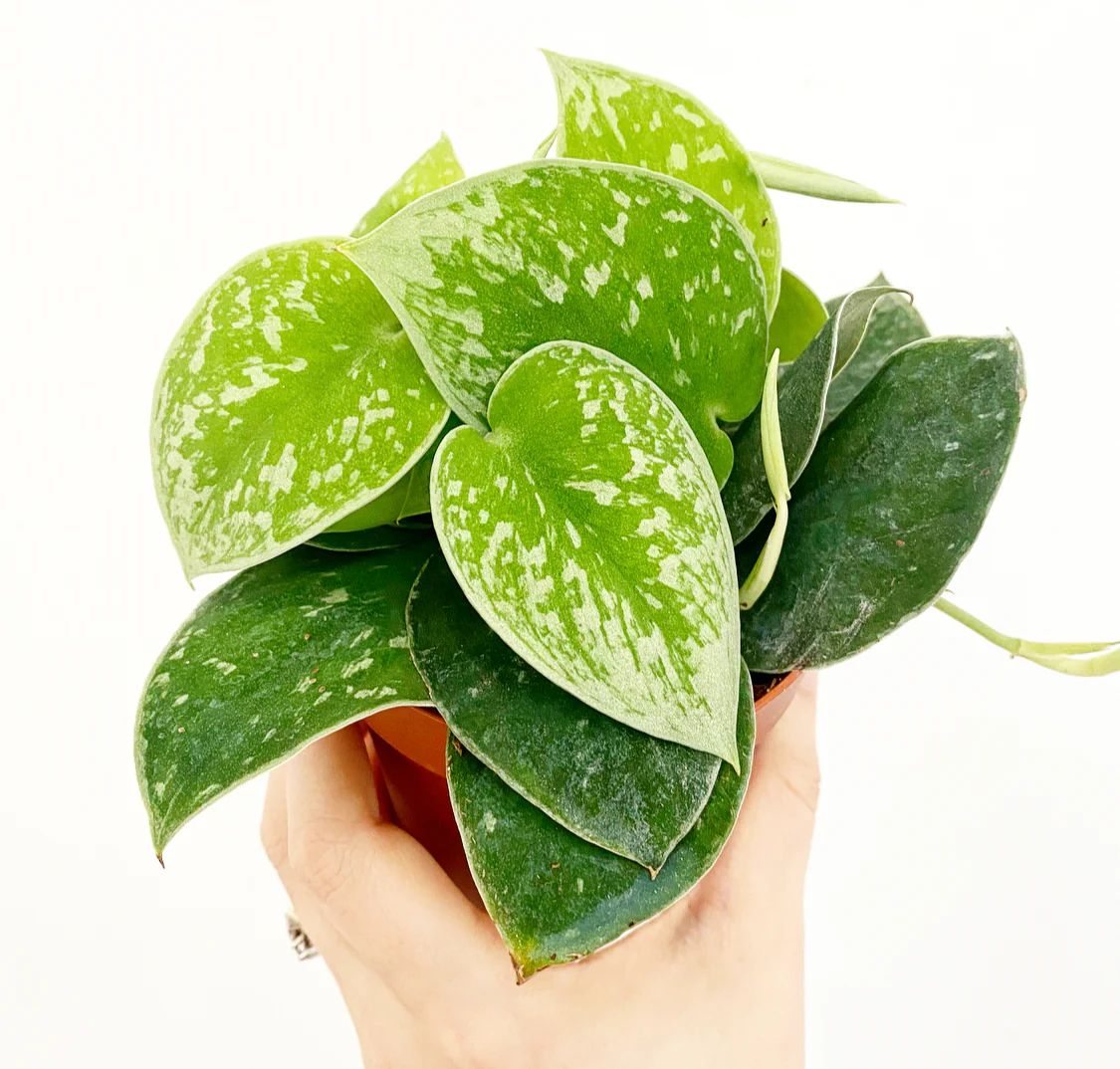The Scindapsus Silvery Ann is a relatively new and increasingly popular houseplant known for its unique silver-green foliage. This vining plant features heart-shaped leaves with prominent silver markings that make it a standout in any indoor plant collection. While beautiful, Scindapsus can sometimes be fussy or tricky to care for properly. Use these 5 easy tips to help your Silvery Ann thrive and unlock its full beauty in your home.

Perfect the Potting Mix
Getting the potting mix right is key to growing healthy Scindapsus. This plant needs a well-draining soil that has some moisture retention ability.
Find the Right Balance
Aim for a mix containing 2 parts potting soil, 1 part perlite or pumice, and 1 part peat or coco coir. This blend creates air pockets for drainage while still holding some water. Too dense of a mix will lead to root rot. Too loose and the plant can dry out fast.
Adjust as Needed
Pay attention to how the top layer of soil dries out between waterings. If it stays soggy, add more perlite/pumice to the mix. If it dries extremely quickly, add a bit more potting soil or peat/coir to retain moisture better. Tweak components until you find the sweet spot.
Getting the potting mix right is key to growing healthy Scindapsus. For additional guidance on creating the ideal soil blend, see our detailed guide in “Scindapsus 101: A Beginner’s Guide to Understanding and Growing“.
Water Thoroughly Then Allow Drying
Scindapsus prefers a thorough watering followed by a period where the top few inches become nearly dry. Develop good watering habits.
Water Until It Flows Through
When watering, add enough liquid until it runs freely from the drainage holes at the bottom. This ensures the entire soil area gets hydrated. Stagnant patches can impact roots.
Let Soil Dry Out After
After a thorough watering, allow the soil to dry out almost completely before doing it again. Use your finger to test moisture a few inches down. Only resume watering once soil is nearly dry.
Scindapsus prefers a thorough watering followed by a period where the top few inches become nearly dry. To refine your watering technique and frequency, check out the tips in “How to Grow Scindapsus in 5 Easy Steps“ for optimal plant health.

“Discover the captivating beauty of Scindapsus Silvery Ann silver. Click now to add this stunning plant to your collection and transform your space with its lush, vein-rich leaves!”
Provide Bright, Indirect Light
Scindapsus enjoys bright light, but direct sun can scorch its leaves. Filter sunlight by using sheers or locating it several feet from unobstructed windows.
South and West Are Best
Position in a south or west-facing window where it gets lots of gentle sunlight throughout the day. Just be sure to diffuse harsh afternoon sun with sheers as needed.
Supplement With a Grow Light
If your space lacks sufficient natural light, install an LED full spectrum grow light above your Scindapsus. Keep it on for 12-14 hours per day. Adjust height as needed.
Increase Humidity
This tropical plant appreciates 40-60% relative ambient humidity. Boost moisture levels around your Silvery Ann.
Use a Cool Mist Humidifier
Run a cool mist humidifier near your Scindapsus to increase humidity in its microclimate without risking heat damage to leaves. Top off tank regularly.
This tropical plant appreciates 40-60% relative ambient humidity. For more tips on maintaining the right humidity levels for your Scindapsus, explore “Are you growing scindapsus at home? Find out its 5 secret advantages!“.
Create a Pebble Tray
Place the pot on a water-filled pebble tray, being sure the pot itself does not sit in water. As the water evaporates from the pebbles it humidifies the plant’s environment.

Fertilize Every 2-3 Months
While a light feeder, Scindapsus benefits from occasional fertilizer to truly thrive. Use a balanced houseplant formula.
Feed During Growing Season
Fertilize every 8-12 weeks during spring through summer when the plant is actively growing. Discontinue in fall and winter when growth slows.
Half-Strength Application
Dilute liquid fertilizers to half-strength before applying. Use full concentration on very mature, large specimens only. Too much fertilizer can burn roots and leaves.
Conclusion
Achieving a lush, vibrant Scindapsus Silvery Ann relies on getting a few key elements right in your care routine. Perfect potting mix, ideal moisture levels, bright indirect light, ample humidity, and occasional feeding are all easy ways to unlock the full beauty of this eye-catching houseplant. Pay attention to its needs and your Silvery Ann will reward you with vigorous growth and gorgeous silver-splashed foliage.
FAQ
- What is Scindapsus Silvery Ann? Scindapsus Silvery Ann is a popular houseplant known for its heart-shaped leaves adorned with silver or grey variegation. It belongs to the Araceae family and is a variety of Scindapsus pictus.
- How do you care for a Scindapsus Silvery Ann? To care for a Scindapsus Silvery Ann, provide it with bright, indirect light and water when the top inch of soil feels dry. It thrives in high humidity and prefers a well-draining potting mix. Avoid overwatering to prevent root rot.
- Can Scindapsus Silvery Ann thrive in low light? While it can tolerate low light conditions, Scindapsus Silvery Ann’s growth may slow, and its variegation may become less pronounced. It is best to provide bright, indirect light for optimal growth and leaf coloration.
- Is Scindapsus Silvery Ann toxic to pets? Yes, like many plants in the Araceae family, Scindapsus Silvery Ann is toxic to pets if ingested. It contains calcium oxalate crystals which can cause oral irritation, drooling, vomiting, and difficulty swallowing in pets.
- How do you propagate Scindapsus Silvery Ann? Scindapsus Silvery Ann can be easily propagated by stem cuttings. Cut a stem with a few leaves and nodes, and place it in water or moist soil. Roots will typically develop within a few weeks, after which the cutting can be potted.

